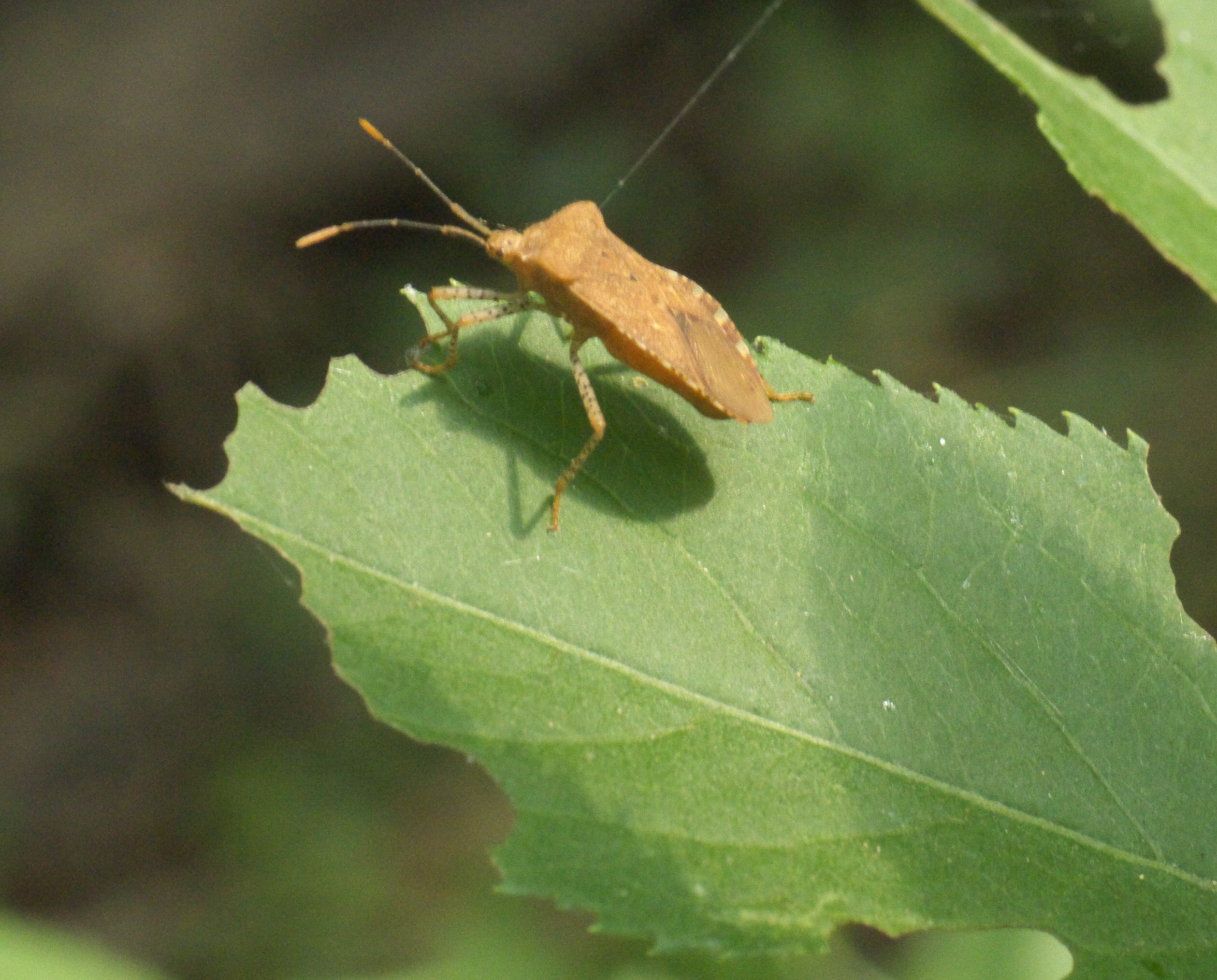|
Dalman's Leatherbug
''Spathocera dalmanii'', known as Dalman's leatherbug, is a species of insect in the family Coreidae, tribe Coreini. It is native to Europe. Description ''Spathocera dalmanii'' is brown with a long, pale-sided pronotum. There are no spines on the antennae, head, or pronotum. The scutellum has two wedge-shaped black markings. Ecology and behavior This bug feeds on sheep's sorrel, ''Rumex acetosella ''Rumex acetosella'', commonly known as red sorrel, sheep's sorrel, field sorrel and sour weed, is a species of flowering plant in the buckwheat family Polygonaceae. Native to Eurasia and the British Isles, the plant and its subspecies are co ...''. The adults move slowly and rarely fly. There may be two generations per year in warmer areas. References {{Taxonbar, from=Q10674517 Coreini Hemiptera of Europe ... [...More Info...] [...Related Items...] OR: [Wikipedia] [Google] [Baidu] |
Coreidae
Coreidae is a large family of predominantly sap-sucking insects in the Hemipteran suborder Heteroptera. The name "Coreidae" derives from the genus ''Coreus'', which derives from the Ancient Greek () meaning bedbug. As a family, the Coreidae are cosmopolitan, but most of the species are tropical or subtropical. Common names and significance The common names of the Coreidae vary regionally. Leaf-footed bug refers to leaf-like expansions on the legs of some species, generally on the hind tibiae. In North America, the pest status of species such as '' Anasa tristis'' on squash plants and other cucurbits gave rise to the name squash bugs. The Coreidae are called twig-wilters or tip-wilters in parts of Africa and Australia because many species feed on young twigs, injecting enzymes that macerate the tissues of the growing tips and cause them to wilt abruptly. Morphology and appearance The Coreidae commonly are oval-shaped, with antennae composed of four segments, numerous ve ... [...More Info...] [...Related Items...] OR: [Wikipedia] [Google] [Baidu] |
Coreini
Coreini is a tribe of leaf-footed bugs in the family Coreidae. There are at least 20 genera and 70 described species in Coreini. Genera These 25 genera belong to the tribe Coreini: * '' Althos'' Kirkaldy, 1904 * '' Anasa'' Amyot & Serville, 1843 (squash bugs) * '' Catorhintha'' Stål, 1859 * '' Centrocoris'' Kolenati, 1845 * '' Centroplax'' Horváth, 1932 * '' Cercinthinus'' Kiritshenko, 1916 * ''Cercinthus'' Stål, 1860 * ''Cimolus'' Stål, 1862 * ''Coreus'' Fabricius, 1794 * '' Enoplops'' Amyot and Serville, 1843 * '' Eretmophora'' Stein, 1860 * '' Haidara'' Distant, 1908 * '' Haploprocta'' Stål, 1872 * '' Hypselonotus'' Hahn, 1833 * ''Madura'' Stål, 1860 * '' Namacus'' Amyot & Serville, 1843 * '' Nisoscolopocerus'' Barber, 1928 * ''Oannes'' Distant, 1911 * '' Scolopocerus'' Uhler, 1875 * '' Sethenira'' Spinola, 1837 * ''Spathocera'' Stein, 1860 * '' Syromastus'' Berthold in Latreille, 1827 * '' Vazquezitocoris'' Brailovsky, 1990 * '' Villasitocoris'' Brailovsky, 1990 * '' Z ... [...More Info...] [...Related Items...] OR: [Wikipedia] [Google] [Baidu] |
Pronotum
The prothorax is the foremost of the three segments in the thorax of an insect, and bears the first pair of legs. Its principal sclerites (exoskeletal plates) are the pronotum ( dorsal), the prosternum ( ventral), and the propleuron ( lateral) on each side. The prothorax never bears wings in extant insects (except in some cases of atavism), though some fossil groups possessed wing-like projections. All adult insects possess legs on the prothorax, though in a few groups (e.g., the butterfly family Nymphalidae) the forelegs are greatly reduced. In many groups of insects, the pronotum is reduced in size, but in a few it is hypertrophied, such as in all beetles (Coleoptera). In most treehoppers (family Membracidae, order Hemiptera), the pronotum is expanded into often fantastic shapes that enhance their camouflage or mimicry. Similarly, in the Tetrigidae, the pronotum is extended backward to cover the flight wings, supplanting the function of the tegmina. See also * Glossary o ... [...More Info...] [...Related Items...] OR: [Wikipedia] [Google] [Baidu] |
Scutellum (insect Anatomy)
The scutellum is the posterior portion of either the mesonotum or the metanotum of an insect thorax; however, it is used almost exclusively in the former context, as the metanotum is rather reduced in most insect groups. In the Hemiptera, and some Coleoptera, the scutellum is a small triangular plate behind the pronotum The prothorax is the foremost of the three segments in the thorax of an insect, and bears the first pair of legs. Its principal sclerites (exoskeletal plates) are the pronotum ( dorsal), the prosternum ( ventral), and the propleuron ( lateral) o ... and between the forewing bases. In Diptera and Hymenoptera the scutellum is nearly always distinct, but much smaller than (and immediately posterior to) the mesoscutum. File:Heteroptera morphology-d.svg, 26 = Heteroptera scutellum File:Housefly anatomy-key.svg, 6 = Diptera scutellum File:Coléoptère schématique.jpg, 9 = Coleoptera scutellum File:Scheme ant worker anatomy-numbered.svg, 10 = Formicidae scutellu ... [...More Info...] [...Related Items...] OR: [Wikipedia] [Google] [Baidu] |
Rumex Acetosella
''Rumex acetosella'', commonly known as red sorrel, sheep's sorrel, field sorrel and sour weed, is a species of flowering plant in the buckwheat family Polygonaceae. Native to Eurasia and the British Isles, the plant and its subspecies are common perennial weeds. It has green arrowhead-shaped leaves and red-tinted deeply ridged stems, and it sprouts from an aggressive and spreading rhizome. The flowers emerge from a tall, upright stem. Female flowers are maroon in color. Description ''Rumex acetosella'' is a perennial herb which spreads via rhizomes. It has a slender and reddish, upright stem that is branched at the top, reaching a height of . The arrow-shaped leaves are small, about long and wide, with pointed lobes at the base. It blooms during March to November, when yellowish-green (male) or reddish (female) flowers develop on separate plants at the apex of the stem, which develop into the red fruits (achenes). It should not be confused with the similarly named ''R. a ... [...More Info...] [...Related Items...] OR: [Wikipedia] [Google] [Baidu] |
